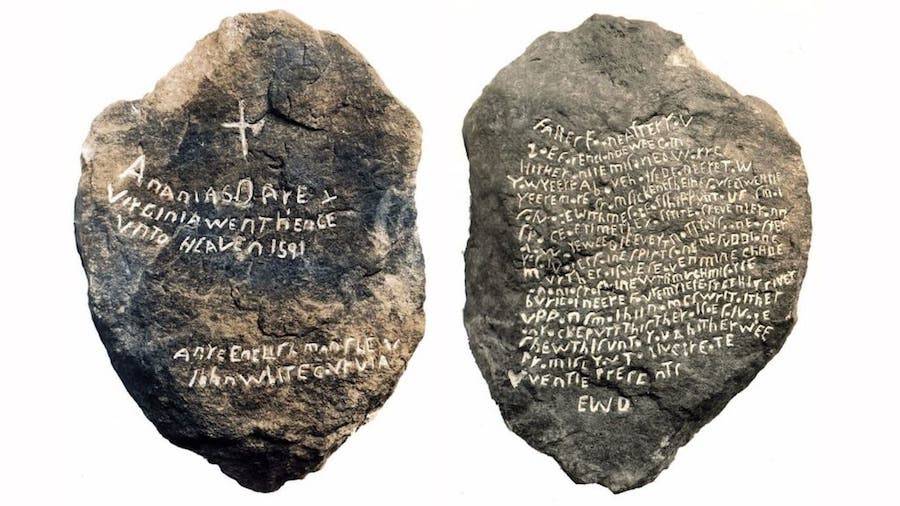This Week In History News, July 8 – 14

This stone’s inscription may hold a message from the Lost Colony of Roanoke.
Centuries-old stone may solve Lost Roanoke Colony mystery, new study says we didn't all evolve from one population, unearthed ancient Egyptian sarcophagus contains unknown body.
430-Year-Old Mystery Of The Lost Colony Of Roanoke May Finally Be Solved Thanks To This Stone
“If this stone is real, it’s the most significant artifact in American history of early European settlement,” said Ed Schrader, a geologist and president of Brenau University in Georgia. “If it’s not, it’s one of the most magnificent forgeries of all time.”
The stone that Schrader is referring to is a 21-pound engraved rock that, based on the results of upcoming testing, could perhaps solve the mystery behind the “Lost Colony” of Roanoke that has puzzled historians for centuries. This mystery involves the creepy disappearance of more than 100 English settlers from the colony sometime between 1587 and 1590 — and the stone may finally help explain what happened.
We Didn’t All Evolve From One Population Of Early Humans, Bold New Research Claims

Homo sapiens
Scientists widely believe that modern human beings evolved from a single population of Homo sapiens in present-day Morocco some 300,000 years ago. But a new study is now suggesting that we rewrite the very foundations of our evolution.
According to research published in Trends in Ecology & Evolution on July 11, early humans did not emerge from a single population, but instead from a diverse collection of groups unlike anything most scientists had imagined in the past.
A Giant Ancient Sarcophagus Was Just Found In Egypt – And No One Knows Who’s Inside

Nobody knows who is inside the uncovered sarcophagus.
For millennia, archaeologists have found extraordinary finds from the trove of ancient tombs, burials, and artifacts in Egypt.
And still, people continue to be captivated by new discoveries. The latest is a black granite sarcophagus, uncovered in the Sidi Gaber district of Alexandria.
This particular sarcophagus stands out for two reasons. The first is that it’s massive. The biggest ever found in the city, the dark coffin is about six feet tall, eight and a half feet long, and five feet wide.
The second is that a layer of mortar was found between the lid and the rest of the coffin. This indicates that it hasn’t been opened in at least 2,000 years, which is about when it was first sealed — and no one knows what’s inside.
No comments: